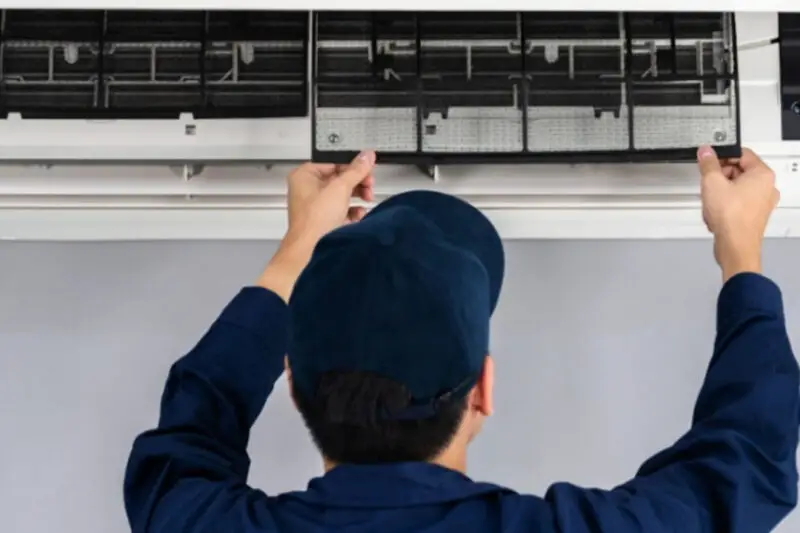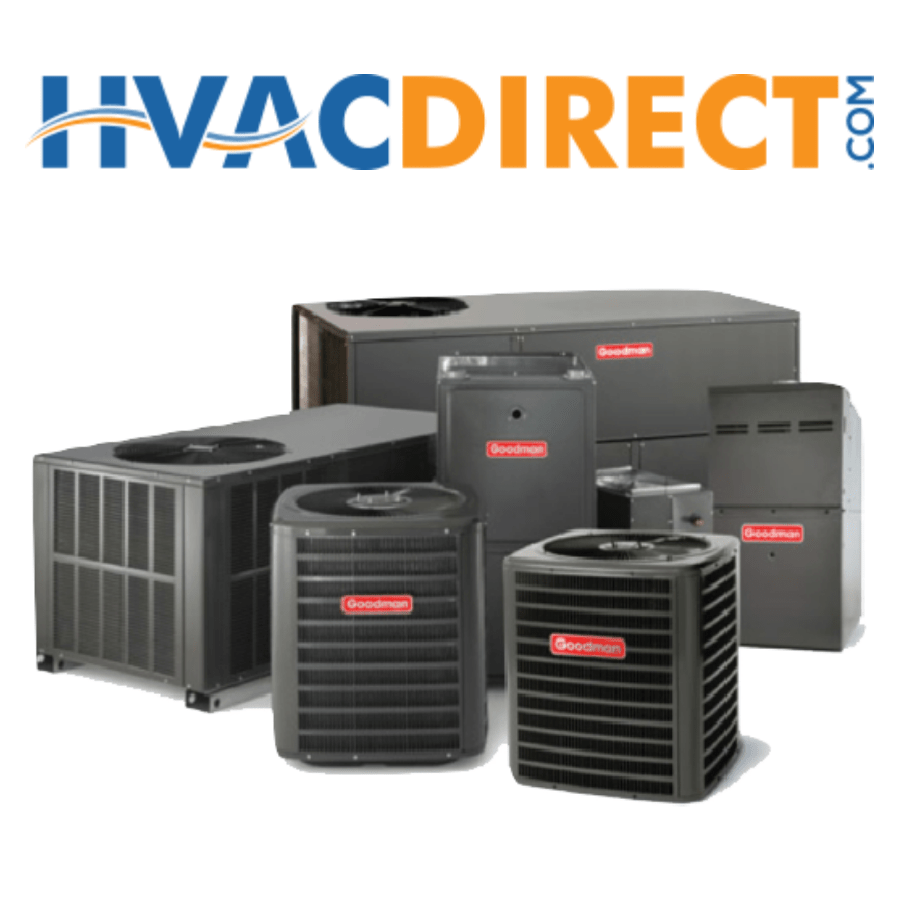Regular cleaning and maintenance will protect your PTAC system’s energy efficiency and performance in addition to extending its lifespan but first, you need to know How To Clean PTAC Units. Additionally, a clean unit guarantees ideal interior air quality and minimizes the need for frequent, costly repairs. Do the expense and trouble of getting a PTAC unit to worry you? According to Airconditionerlab.com, PTAC air conditioning repair Brooklyn services often take less time and money to maintain than conventional AC systems, and you can maintain them with a few easy steps.
Monthly Maintenance
The monthly maintenance of your PTAC unit is not as difficult as it may seem. It takes less than 30 minutes to perform and will keep your system working properly for many years.
Maintain your PTAC Unit each month by:
1. Having the Air Filters Cleaned
PTACs filter airborne dust and allergens to improve air quality. This function makes indoor air healthier and simpler to breathe for those with allergies or respiratory conditions. The dirt quickly builds up on air filters, limiting their effectiveness and air quality. Coolandportable.com suggests using the vacuum tube to remove dirt and dust. Use antibacterial soap to clean the filter. To clean filters, remove the front panel. Carefully remove the filters to avoid reintroducing debris. After removing the filters, rinse them with water.
After cleaning, remove AC filters to air dry. If you can’t wait for the filters to dry, use a vacuum instead of water. Immediately replace a ripped filter. Holey filters are useless.
2. Vent Screen Cleaning
Air conditioners are protected with vent screens. Air regularly blows across the screen, collecting grime quickly. If the AC filter isn’t cleaned, the room’s air will be contaminated. Unplug the system before cleaning the vent screen to avoid damaging internal components. Else, an electrical mishap could occur. After disconnecting the AC cabinet, remove its front as instructed. Most hotel-style PTAC covers can be removed by lifting the front’s underside. Different designs may require unscrewing. AC chassis is behind the cabinet lid. Unscrew the chassis from the wall sleeve to reach the vent screen. After that, clean the screen. After cleaning, reassemble and reconnect.
3. Cleaning the Front of the Cabinet
Cleaning will also be necessary for the cabinet front that we previously removed to access the vent screen. To remove collected dust, wipe it with a moist cloth. Clean any visible surfaces, including the discharge air grille. To be safe, disconnect the system before cleaning, and be careful to prevent any of the electrical parts from coming into contact with water.
Don’t clean your AC system with any harsh detergents or cleansers that include ammonia. Such cleaning supplies include ingredients that might harm the internal parts of your AC.
Annual Maintenance
Regular monthly maintenance is less comprehensive than annual PTAC maintenance. It entails a thorough evaluation and cleaning of the appliance. If you live in a heavily polluted location, we advise obtaining a deep clean PTAC treatment every three months rather than once a year. If you use PTACs in a medical institution, it’s also a good idea to have quarterly maintenance. The system won’t be able to maintain ideal air quality to speed patients’ recoveries without a routine deep cleaning. Although you may complete annual maintenance yourself, it is best to hire a specialist to do it. Heavy lifting may be required, and a PTAC maintenance specialist has the skills and equipment to complete the task.
Although particular upkeep requirements will range across PTAC types, comprehensive cleaning will often involve:
- Changing or cleaning the air filter
- To make sure the wall sleeve is still watertight, clean it and examine the caulking surrounding it.
- Condenser coil cleaning and damage inspection, which necessitates disassembling the majority of the appliance
- recognizing deteriorated parts and replacing them
- the thermostat and other PTAC unit controls being examined
- Keeping the base pan clean will help stop water leaks.
- Cleaning the appliance to stop the formation of mold, various germs, and fungus
- examining the refrigerant level and checking for leaks
- running a clearing check to ensure the system is still safe and energy-efficient
Conclusion
Long-term savings of hundreds of dollars can be achieved by keeping your PTAC clean. Don’t forget to perform your monthly cleanings in light of this. Employ a qualified specialist for the yearly cleaning. Make sure the technician has expertise cleaning the particular AC type you have before selecting a PTAC maintenance specialist. Your expert might wind up doing more harm than good if they are not knowledgeable of the precise specifications of your PTAC. The expert should also be able to provide you with advice on how to increase the efficiency of your AC and its longevity.
If you’re having sustainable heating and cooling problems with your PTAC unit contact Bluco Mechanical at
Regular cleaning and maintenance will protect your PTAC system’s energy efficiency and performance in addition to extending its lifespan but first, you need to know How To Clean PTAC Units. Additionally, a clean unit guarantees ideal interior air quality and minimizes the need for frequent, costly repairs. Do the expense and trouble of getting a PTAC unit to worry you? According to Airconditionerlab.com, PTAC air conditioning repair Brooklyn services often take less time and money to maintain than conventional AC systems, and you can maintain them with a few easy steps.
Monthly Maintenance
The monthly maintenance of your PTAC unit is not as difficult as it may seem. It takes less than 30 minutes to perform and will keep your system working properly for many years.
Maintain your PTAC Unit each month by:
1. Having the Air Filters Cleaned
By utilizing filters to snare airborne dust and allergens, your PTAC raises the quality of the air you breathe. Particularly if you suffer from allergies or a respiratory condition, this practical function makes the air within your home healthier and easier to breathe. Since air filters operate continuously, dirt soon builds up on them, reducing their effectiveness and air quality. Use the vacuum tube to clear dirt, dust, and other particles, according to Coolandportable.com. After that, clean the filter with some antibacterial soap. The filters must be removed from the unit’s front panel to be cleaned. Carefully remove the filters to prevent returning part of the gathered dirt to the appliance. Clean the dirt off with running water after removing the filters.
After cleaning, remove the filters from the AC unit and allow them to air dry. If you are unable to wait for the filters to dry, use a vacuum cleaner to clean the area rather than running water. You must immediately change the filter if it has a rip in it. Filters with holes won’t be of any use to you at all.
2. Vent Screen Cleaning
Vent screens keep harmful stuff out of the AC. Air often blows over the screen, causing debris to gather. If not cleaned, the AC filter’s pristine air will be tainted before entering the room. Unplug the system before cleaning the vent screen to avoid touching PTAC components. An electrical mishap could occur otherwise. Instructions say to remove the AC cabinet’s front after unplugging it. Pull the front’s underside up to remove the cover on most hotel-style PTAC units. In some cases, screws must be undone. The AC cabinet lid hides the chassis. To reach the vent screen, remove the chassis from the wall sleeve. Vacuum or dust the screen then. Clean the unit and reconnect it.
3. Cleaning the Front of the Cabinet
Cleaning will also be necessary for the cabinet front that we previously removed to access the vent screen. To remove collected dust, wipe it with a moist cloth. Clean any visible surfaces, including the discharge air grille. To be safe, disconnect the system before cleaning, and be careful to prevent any of the electrical parts from coming into contact with water.
Don’t clean your AC system with any harsh detergents or cleansers that include ammonia. Such cleaning supplies include ingredients that might harm the internal parts of your AC.
Annual Maintenance
Regular monthly maintenance is less comprehensive than annual PTAC maintenance. It entails a thorough evaluation and cleaning of the appliance. If you live in a heavily polluted location, we advise obtaining a deep clean PTAC treatment every three months rather than once a year. If you use PTACs in a medical institution, it’s also a good idea to have quarterly maintenance. The system won’t be able to maintain ideal air quality to speed patients’ recoveries without a routine deep cleaning. Although you may complete annual maintenance yourself, it is best to hire a specialist to do it. Heavy lifting may be required, and a PTAC maintenance specialist has the skills and equipment to complete the task.
Although particular upkeep requirements will range across PTAC types, comprehensive cleaning will often involve:

- Changing or cleaning the air filter
- To make sure the wall sleeve is still watertight, clean it and examine the caulking surrounding it.
- Condenser coil cleaning and damage inspection, which necessitates disassembling the majority of the appliance
- recognizing deteriorated parts and replacing them
- the thermostat and other PTAC unit controls being examined
- Keeping the base pan clean will help stop water leaks.
- Cleaning the appliance to stop the formation of mold, various germs, and fungus
- examining the refrigerant level and checking for leaks
- running a clearing check to ensure the system is still safe and energy-efficient
Conclusion
Long-term savings of hundreds of dollars can be achieved by keeping your PTAC clean. Don’t forget to perform your monthly cleanings in light of this. Employ a qualified specialist for the yearly cleaning. Make sure the technician has expertise cleaning the particular AC type you have before selecting a PTAC maintenance specialist. Your expert might wind up doing more harm than good if they are not knowledgeable of the precise specifications of your PTAC. The expert should also be able to provide you with advice on how to increase the efficiency of your AC and its longevity.
If you’re having sustainable heating and cooling problems with your PTAC unit contact Bluco Mechanical at (929)447-2077 as soon as possible! If you’re new to the HVAC industry the first question that should be asked is “How Do PTAC Units Work” and more.



No Comments
Be the first to start a conversation